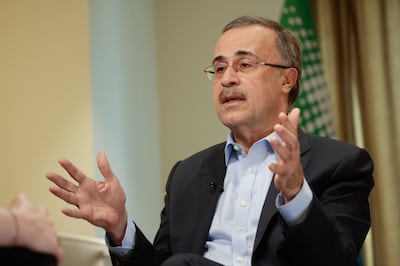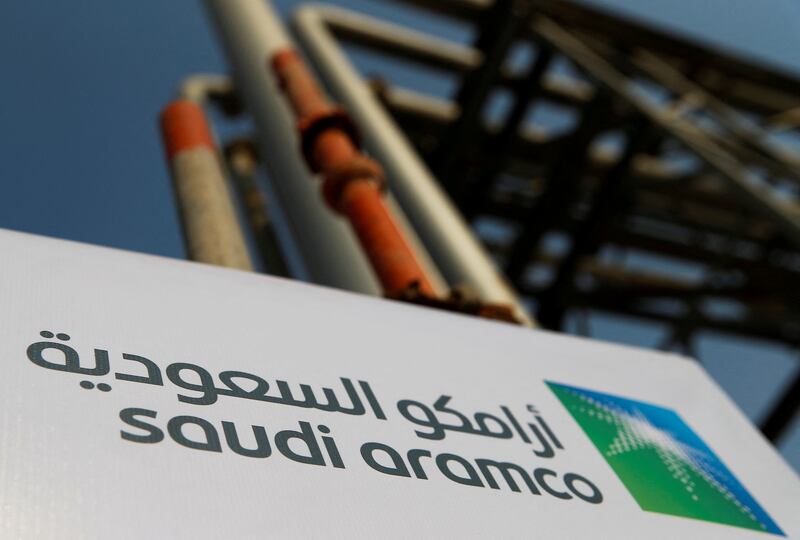Saudi Aramco, the world's largest oil-producing company, increased its 2023 dividend by 30 per cent despite a decline in annual net profit due to lower oil prices and the effect of output cuts.
Net profit for the 12 months to the end of December reached $121.3 billion, compared to a record $161.1 billion in 2022, the state oil company said on Sunday in a statement to the Tadawul stock exchange, where its shares are traded.
The company attributed the year-on-year decrease to lower crude oil prices and volumes sold as well as reduced refining and chemicals margins. This was partially offset by a decrease in production royalties during the year and lower income taxes and zakat.
Revenue last year fell by more than 17 per cent to $440.88 billion. Capital investments reached $49.7 billion, up 28 per cent annually.
The company's dividends for the year rose to $97.8 billion.
“In 2023 we achieved our second-highest ever net income,” said Amin Nasser, Aramco president and chief executive.
“Our resilience and agility contributed to healthy cash flows and high levels of profitability, despite a backdrop of economic headwinds.”
Brent, the benchmark for two thirds of the world’s oil, fell by about 15 per cent during the fourth quarter on higher-than-expected supply and concerns about the outlook for fuel demand.
Aramco reported a record profit in 2022 after Russia’s invasion of Ukraine pushed oil prices to about $140 a barrel. In the same year, global energy majors, including BP, Chevron, Shell and Exxon Mobil, posted combined profits of more than $200 billion.
In January, Aramco scrapped plans to boost production capacity to 13 million barrels per day by 2027, from 12 million bpd currently.
The decision may have been influenced by factors such as escalating costs of developing projects, ample spare capacity and weakening demand outlook for crude amid growing adoption of renewable energy and electric vehicles, according to analysts.
Aramco’s average hydrocarbon production was 12.8 million barrels of oil equivalent per day, including 10.7 million bpd of total liquids last year.
“The recent directive from the government to maintain our maximum sustainable capacity … provides increased flexibility, as well as an opportunity to focus on increasing gas production and growing our liquids-to-chemicals business,” Mr Nasser said.
“At the same time, we continue to make progress on several strategic crude oil increments which will contribute to our reliability, operational flexibility and ability to seize market opportunities,” he added.

Aramco expects capital investments this year to be between $48 to $58 billion, growing until the middle of the decade.
The company said that the move to maintain its oil production at 12 million bpd mainly by postponing certain projects and reducing drilling activity will lower capital expenditure by about $40 billion between now and 2028.
Aramco also said its gas projects were “advancing” to increase production by more than 60 per cent by the end of the decade, compared with 2021 levels.
The company's daily gas processing capacity was at around 18 billion standard cubic feet per day in 2022.
Last year, the company announced its first international investment in liquefied natural gas, following the signing of agreements to acquire a strategic minority stake in MidOcean Energy.
The completion of the deal is subject to closing conditions, which include regulatory approvals, Aramco said.
The company will distribute a base dividend of $20.3 billion for the last three months of 2023, which will be paid out in the first quarter.
On top of this base dividend, Aramco's board has also approved an additional dividend payment of $10.8 billion, which is linked to the company's performance.
Last week, Saudi Arabia transferred an 8 per cent stake in Aramco to the Public Investment Fund amid reports that the government could be preparing to offer more shares for sale in the energy company.
Following the transfer, the kingdom remains Aramco’s largest shareholder, retaining a stake of about 82 per cent, the company said in a filing on Thursday.
Last year, the Wall Street Journal reported that Aramco was considering a $50 billion share offering, potentially the largest in global capital market history.






